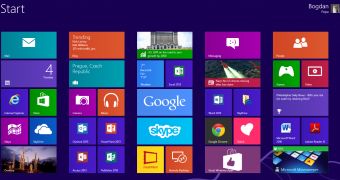Windows has always been regarded as one of the most attacked operating systems in the world, but the trend is slowly changing, security company Sophos revealed in its Security Threat Report 2013.
Basically, the number of attacks aimed at Mac and Android platforms has grown a lot lately, Sophos explained, so Windows is no longer cybercriminals’ main concern.
Microsoft has also invested heavily to improve the security of its operating system, so Windows 8 comes with many new technologies or updated features in this regard.
“In 2012, we saw attackers extend their reach to more platforms, from social networks and cloud services to Android mobile devices. We saw them respond to new security research findings more rapidly, and leverage zero-day exploits more effectively,” Sophos said in the report.
In 2013, on the other hand, the same trend is expected to continue, with more attacks to be aimed at a wider array of platforms.
“Security really is about more than Microsoft. The PC remains the biggest target for malicious code today, yet criminals have created effective fake antivirus attacks for the Mac. Malware creators are also targeting mobile devices as we experience a whole new set of operating systems with different security models and attack vectors,” the security company explained.
Aside from a long list of powerful anti-virus software, Windows is also an operating system that has received plenty of security improvements, as most of the vulnerable Windows 7 features are no longer available in Windows 8.
The Sidebar and the Windows 7 gadgets aren’t available in Windows 8, while Microsoft has equipped its latest operating system with a full-featured anti-virus product. Windows Defender has been upgraded from an anti-spyware product to a full-featured anti-virus solution that boasts a long list of improvements, including virus definition updates and real-time protection.
Windows Defender cannot be removed from a Windows 8 system, but only disabled. What’s more, this application is automatically disabled once the user deploys a third-party security product, but it’s automatically reinstated once this software solution is removed.
“Once, almost everyone ran Windows. Attackers attacked Windows. Defenders defended Windows. Those days are gone,” Sophos concluded.

 14 DAY TRIAL //
14 DAY TRIAL //